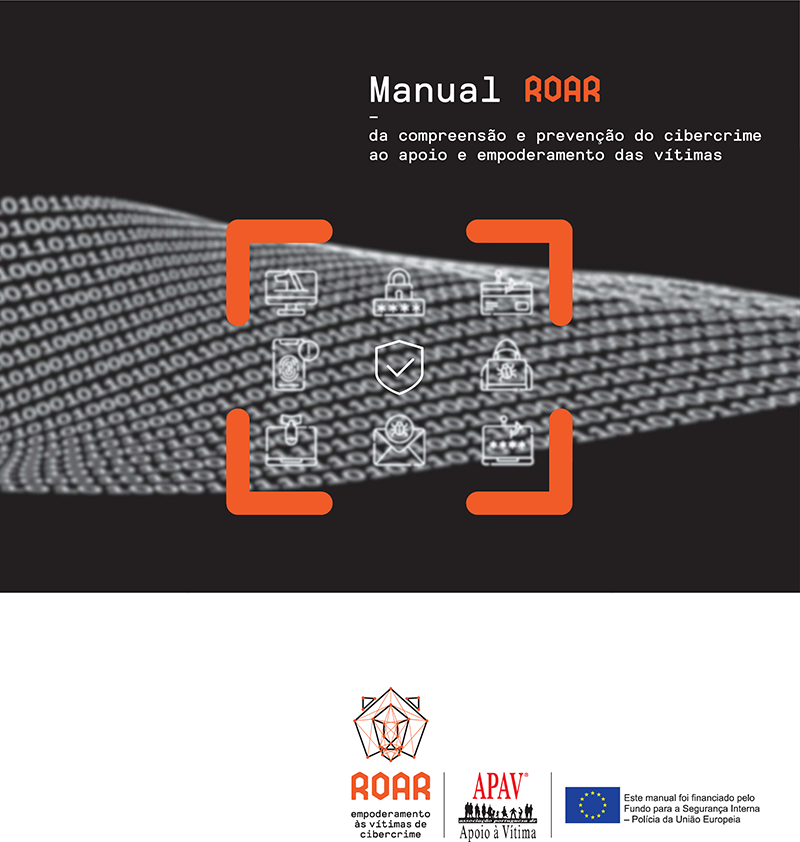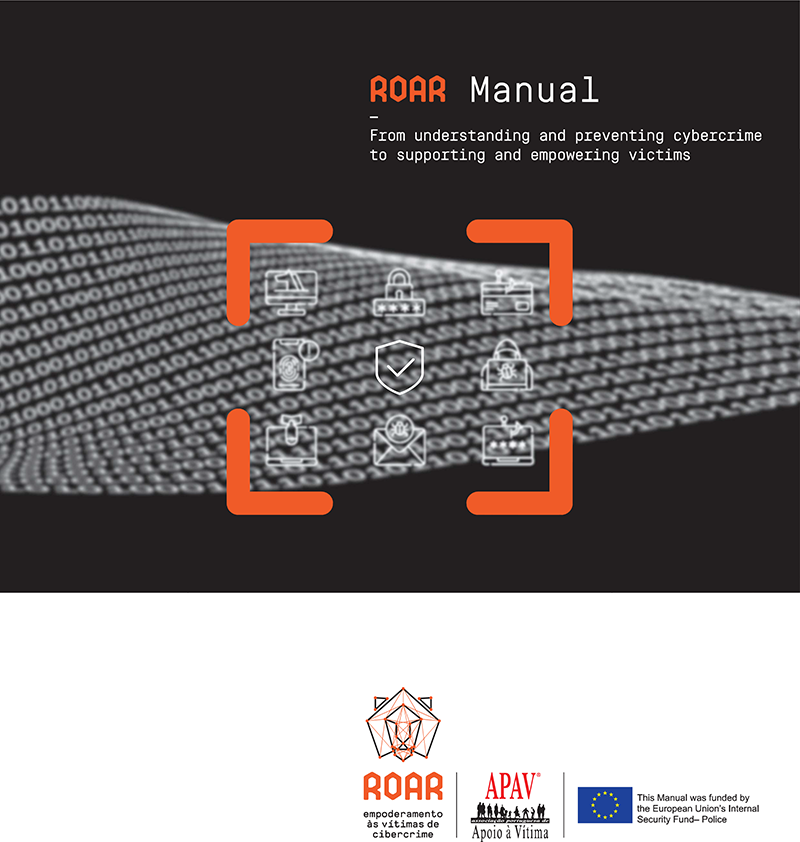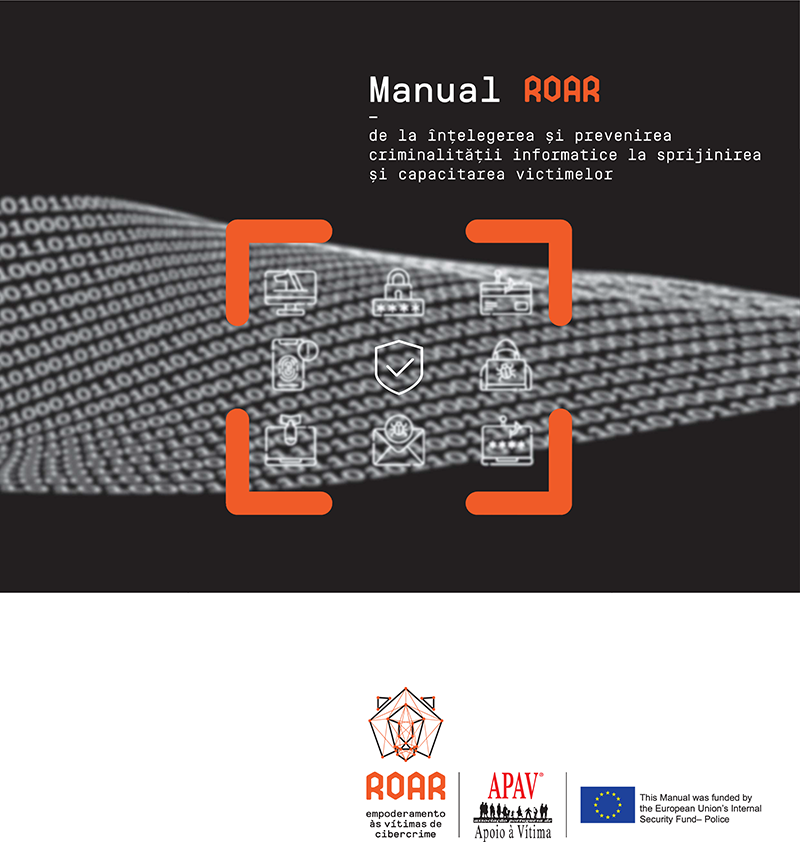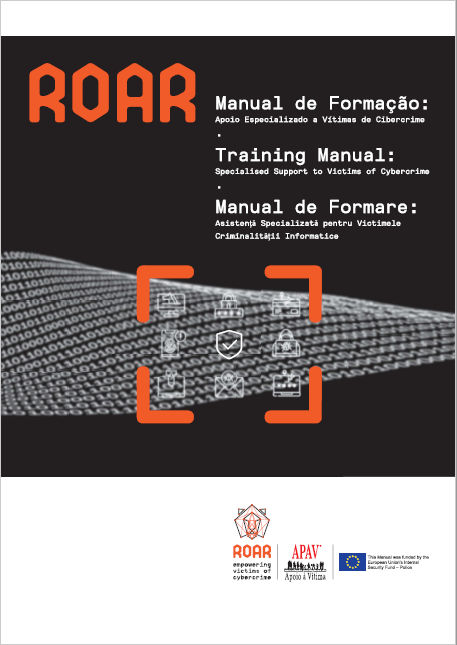
APAV provides support manuals for cybercrime victims
Handbook
It is estimated that about 1 million people are victims of cybercrime a day. While the Internet has facilitated activities such as shopping and banking and has allowed for interpersonal contact despite distance or physical borders, it has also created another setting in which crime can occur. These cybercrimes may include phishing, fraud, stalking, hate speech, and child sexual abuse.
Aiming to protect, empower and care for victims of electronic crime, the ROAR project was developed by APAV in partnership with institutions from two other European countries, namely the German WEISSER RING and the Romanian ACTEDO, in addition to the national partners, PT Portugal, the Attorney General of the Republic (PGR) and the National Republican Guard (GNR). And this project was funded by the European Union’s Internal Security Fund – Police.
During the project execution, thematic workshops were held for security forces and judicial authorities, with the purpose of drawing attention to the problem of cybercrime and the need to also protect the victims of these crimes. In order to empower and raise awareness of potential victims of cybercrime, the pedagogical aspect of the project carried out training actions for children and young people, distributing informative materials.
The result of all these actions culminated in the elaboration of a manual of procedures to be adopted in case of assistance to victims of cybercrime, in addition to a set of recommendations to help clarify eventual issues and facilitate the fieldwork, policy paper.
Handbook
In the policy paper, the focus is to address cybercrime at the domestic level and then form partnerships (especially among the EU) that will allow for a united, international approach towards preventing the crime and protecting the victims. It acknowledges the faults and challenges in legislation that are currently in place in certain countries in order to emphasize the need for policies to evolve at the same rate as cybercrime. Cybercrime can be better addressed not only with more proactive legal measures but also with better understanding of it. For example, the paper promotes professional research and access to education of cyber risks and reporting. Cybercrime can threaten individuals, groups, companies, and governments, which is why this policy paper in addition with the handbook are vital in continuing to promote the safety and protection of communities.
Training Manual
The training manual is divided into two parts: the first, "Understanding cybercrime", addresses the understanding of the phenomena and their legal framework; and the second, "Specialized support for victims of cybercrime", reports on aspects and techniques to be adopted in case of assistance to victims of cybercrime, in addition to a set of recommendations to help clarify any questions and facilitate field work. This manual includes 10 modules that complement the training provided by APAV to its employees, interns and volunteers.
Policy Paper
In the policy paper, the focus is to address cybercrime at the domestic level and then form partnerships (especially among the EU) that will allow for a united, international approach towards preventing the crime and protecting the victims. It acknowledges the faults and challenges in legislation that are currently in place in certain countries in order to emphasize the need for policies to evolve at the same rate as cybercrime. Cybercrime can be better addressed not only with more proactive legal measures but also with better understanding of it. For example, the paper promotes professional research and access to education of cyber risks and reporting. Cybercrime can threaten individuals, groups, companies, and governments, which is why this policy paper in addition with the handbook are vital in continuing to promote the safety and protection of communities.
The content of this project represents the views of the author only and is his/her sole responsibility. The European Commission does not accept any responsibility for use that may be made of the information contains.
All the documents developed can be consulted here, available in English, Portuguese, Romanian and German.














